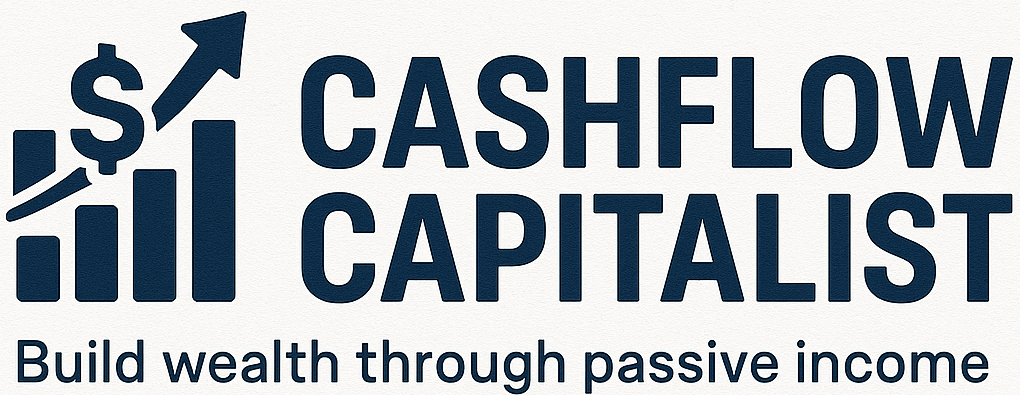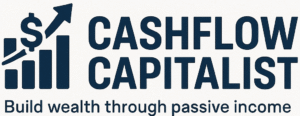5 Steps to Reaching Financial Independence in Canada: How to Build Wealth and Retire Early
Imagine waking up every day knowing your money works harder than you do. That’s financial independence. It’s when your investments cover your lifestyle, and work is a choice, not a must.

In this guide, we’ll show you five key steps to build wealth and achieve freedom in Canada. By following these steps, you can control your financial future and live a life of financial freedom. For more details, check out our full guide on achieving financial freedom in Canada.
Key Takeaways
- Start early and stay consistent in your financial planning.
- Use the 50/30/20 rule to allocate your income wisely.
- Save and invest with TFSAs, RRSPs, and RESPs.
- Explore high-interest savings ETFs and dividend ETFs for investments.
- Manage interest rate risk and diversify your portfolio.
The Canadian Path to Financial Freedom
Canadians are now looking for financial freedom, moving away from old retirement ideas. Financial freedom isn’t just about stopping work. It’s about having the freedom to follow your passions without worrying about money.
What Financial Independence Truly Means for Canadians
For Canadians, financial independence means having enough money to cover living costs without a steady paycheck. It’s about living a life where you make choices based on what makes you happy, not just what you need financially.
The FIRE Movement and Its Growing Community in Canada
The FIRE (Financial Independence, Retire Early) movement is growing in Canada. It encourages people to save a lot and invest smartly to retire early. This community values being frugal, investing wisely, and knowing about money.
Setting Your Financial Independence Timeline and Targets
To reach financial independence, setting clear goals and timelines is key. You need to figure out your expenses, how much you save, and how much you’ll earn from investments. This helps you know how much to save and by when.

Step 1: Master Your Money with Strategic Budgeting
Starting your journey to financial freedom means understanding and managing your money well. You need a budget that matches your financial goals.
Creating a Canadian-Specific Budget That Actually Works
To make a budget that works, think about Canada’s cost of living. The 50/30/20 rule is a good start. Use 50% for necessary expenses like rent and utilities, 30% for fun stuff, and 20% for saving and paying off debt.
The 50/30/20 Rule Adapted for Canadian Living Costs
In Canada, the 50/30/20 rule might need tweaking because of high living costs in places like Toronto or Vancouver. If you live there, you might need to spend more on necessary expenses.
Determining Your Ideal Savings Rate for Early Retirement
Your savings rate is key to reaching financial freedom. Aim to save at least 20% of your net income. For faster savings, try saving more. You can also look into retiring early with a modest income to help your savings grow.
Smart Expense Reduction Strategies in Canada’s High-Cost Market
Lowering your expenses helps you save more. Here are some tips:
- Reduce dining out and subscription services.
- Look for cheaper housing or consider downsizing.
- Use public transport or carpool to cut down on travel costs.
By using these tips, you can lower your expenses and boost your savings.

Step 2: Eliminate Debt and Build Your Financial Foundation
Getting rid of debt is key to financial freedom in Canada. You need a smart plan to manage your money.
Strategic Debt Elimination: The Canadian Approach
Dealing with debt needs a solid strategy. In Canada, start with high-interest debts like credit cards.
Tackling High-Interest Debt First
Pay off high-interest debts first. Use the snowball or avalanche method to clear debt fast.
| Debt Type | Interest Rate | Priority |
|---|---|---|
| Credit Card | 20% | High |
| Personal Loan | 6% | Medium |
| Mortgage | 3% | Low |
Building a Canadian Emergency Fund: How Much Is Enough?

Creating Financial Security Before Aggressive Investing
Make sure you’re debt-free and have enough savings before investing. This is your financial foundation.
By taking these steps, you’re on the path to financial freedom in Canada.
Step 3: Maximize Tax-Advantaged Accounts for Financial Independence Canada
Canadian investors can boost their financial freedom by using tax-advantaged savings. It’s key to know and use these options wisely.
TFSA vs. RRSP: Strategic Use for Early Retirement
When planning for early retirement, Canadians face a choice between TFSAs and RRSPs. For more insights, check out detailed comparisons to guide your decision.
The TFSA Millionaire Strategy
The TFSA Millionaire Strategy aims to grow wealth through TFSAs. By maxing out yearly contributions, Canadians can build up savings. This approach benefits from tax-free growth and withdrawals.
| Account Type | Contribution Room | Tax Benefits |
|---|---|---|
| TFSA | Annual limit set by government | Tax-free growth and withdrawals |
| RRSP | Based on earned income | Tax-deductible contributions, tax-deferred growth |
Optimizing Contribution Strategies for Tax Efficiency
To boost tax efficiency, Canadians should think about their financial situation and goals. Strategic planning helps decide between TFSA or RRSP contributions.
“The key to maximizing tax-advantaged accounts lies in understanding your personal financial goals and tax situation.”
Long-Term Growth of Tax-Sheltered Investments
Tax-sheltered investments promise long-term growth. By using TFSAs and RRSPs, Canadians can substantially increase their wealth. This is thanks to compound interest and tax benefits.

Step 4: Build a Canadian Investment Portfolio for Long-Term Wealth
Creating a strong investment portfolio is key for Canadians wanting financial freedom. A diverse portfolio manages risk and grows steadily over time.
Canadian Index Funds and ETFs for Passive Growth
Canadian index funds and ETFs are great for those who prefer passive investing. They give broad market access and often have lower fees than active funds. For example, investing in Canadian index funds that follow major indices like the S&P/TSX Composite Index is a good choice.
Top Canadian ETFs for Financial Independence
- BlackRock iShares S&P/TSX 60 Index ETF: Tracks the S&P/TSX 60 Index, giving access to Canada’s biggest companies.
- Vanguard FTSE Canada All Cap Index ETF: Covers the whole Canadian equity market.
Dividend Investing Strategies for Sustainable Passive Income
Dividend investing is a smart way to earn passive income. It focuses on stocks or ETFs that pay dividends. This way, Canadians can get a steady income stream. Experts say, “Dividend investing is a key to building long-term wealth.”
“The key to successful investing is to never stop investing.” – Warren Buffett
Asset Allocation Models Based on Your FI Timeline
Asset allocation is vital for your investment portfolio’s risk and return. Canadians should adjust their allocation based on their financial independence timeline. A longer timeline means a more aggressive allocation, while a shorter timeline calls for caution.

By using these strategies, Canadians can craft a solid investment portfolio that supports their long-term financial dreams.
Step 5: Develop Multiple Income Streams for Accelerated Wealth Building
To reach financial freedom faster, it’s key to have more than one income source. This way, you spread out your financial risk and boost your wealth growth.
Side Hustles and Entrepreneurship Opportunities in Today’s Canadian Economy
Side jobs and starting your own business can change your financial game. In Canada, you can use your talents for a part-time gig or freelance work. Look into passive income ideas to add to your main income.
Real Estate and Alternative Passive Income Investments in Canada
Real estate is a solid choice for extra income. You can buy rental properties or look into other real estate investments.
REITs and Other Real Estate Alternatives
Real Estate Investment Trusts (REITs) let you invest in real estate without property management. You can also try real estate crowdfunding or mutual funds.
| Investment Type | Risk Level | Potential Return |
|---|---|---|
| REITs | Medium | 8% |
| Real Estate Crowdfunding | High | 12% |
| Real Estate Mutual Funds | Medium | 9% |
Turning Passions into Income-Generating Activities
Turning your hobbies into money makers is rewarding and profitable. You can make digital products, teach courses, or turn your hobby into cash.
By having different income sources, you speed up your wealth growth and secure your financial future. Dive into these options now to control your financial freedom.
Conclusion: Your Journey to Financial Freedom Starts Today
Starting your journey to financial freedom is exciting. It takes a long-term view and flexibility in planning. Follow the five steps in this article to reach your Canadian financial goals and build wealth over time.
Investing regularly and smart money habits are key to growing your wealth. Mastering your budget, paying off debt, and using tax-advantaged accounts are important. Also, diversify your investments and create multiple income streams to control your financial future.
Your path to financial freedom is unique. It’s vital to stay committed to your goals. With persistence and the right strategies, you can achieve financial independence and enjoy the lifestyle you desire. Begin your journey today and take the first step towards a secure financial future.
FAQ
What is financial independence, and how can I achieve it in Canada?
Financial independence means you have enough money to live without working. In Canada, you can get there by budgeting, paying off debt, and using tax-advantaged accounts. Also, build a portfolio and create different income streams.
How does the FIRE movement work, and is it suitable for Canadians?
The FIRE movement is about saving and investing to retire early. It started in the US but works in Canada too. Just remember to consider Canada’s financial scene and tax laws.
What is the 50/30/20 rule, and how can I adapt it to my Canadian budget?
The 50/30/20 rule helps you budget. It says spend 50% on needs, 30% on wants, and 20% on saving. Canadians can adjust this to fit their budget and local costs.
How can I eliminate high-interest debt and build an emergency fund in Canada?
To get rid of high-interest debt, pay off the most expensive first. You might use a balance transfer or consolidate. For an emergency fund, save 3-6 months’ worth in a savings account.
What are the benefits of using TFSAs and RRSPs for financial independence in Canada?
TFSAs and RRSPs help you save for the future. TFSAs grow tax-free, and RRSPs let you deduct contributions. Both are great for financial independence.
How can I build a Canadian investment portfolio for long-term wealth?
A good portfolio mixes assets like index funds and stocks. Think about your risk level, how long you can invest, and your goals. This will help you choose the right investments.
What are some side hustles and entrepreneurship opportunities in Canada?
Canadians can try freelancing, tutoring, or selling online. You can also start a business, invest in a franchise, or work in the gig economy.
How can I turn my passions into income-generating activities in Canada?
Find your skills and interests, then find ways to make money from them. This could be creating products, consulting, or licensing your ideas.
What is the importance of having multiple income streams for financial independence?
Multiple income streams help you grow wealth faster and reduce risk. They make your finances more stable and increase your chances of financial freedom.
How can I optimize my investment strategy for tax efficiency in Canada?
To save on taxes, think about the tax impact of your investments. Use tax-efficient investments in taxable accounts and tax-advantaged ones like TFSAs and RRSPs.




